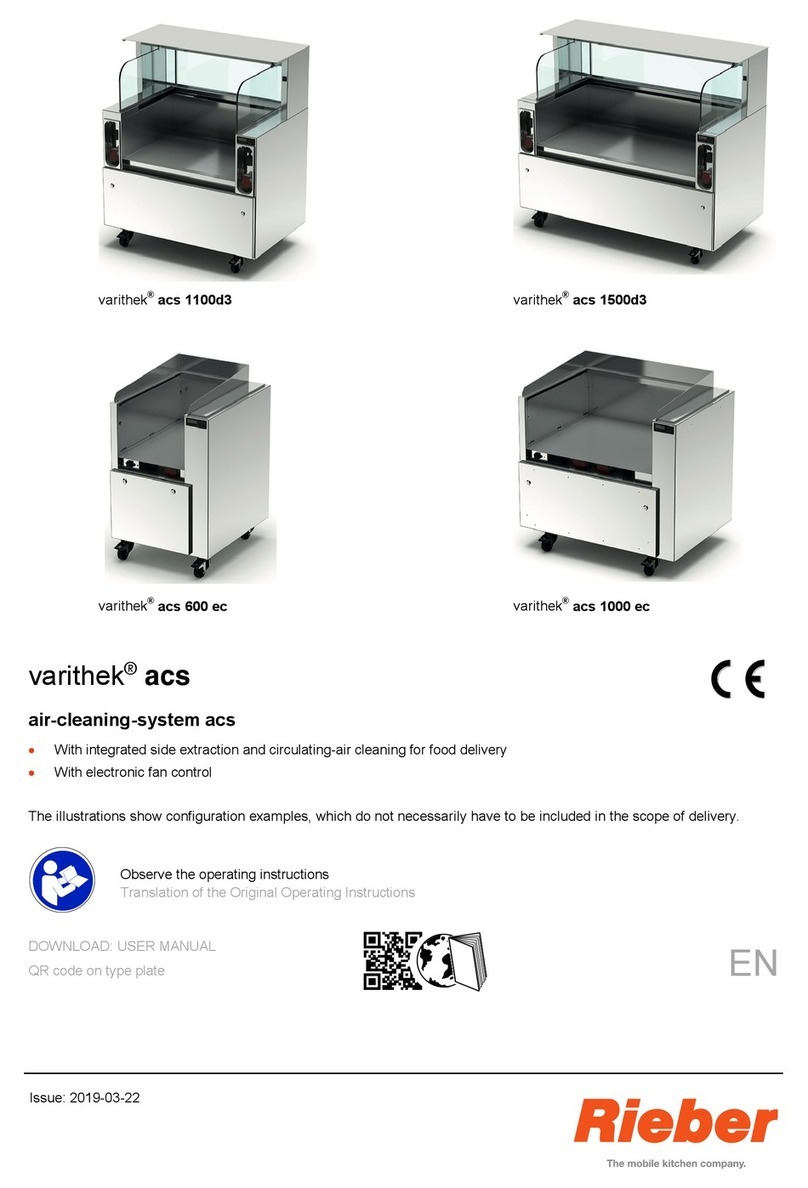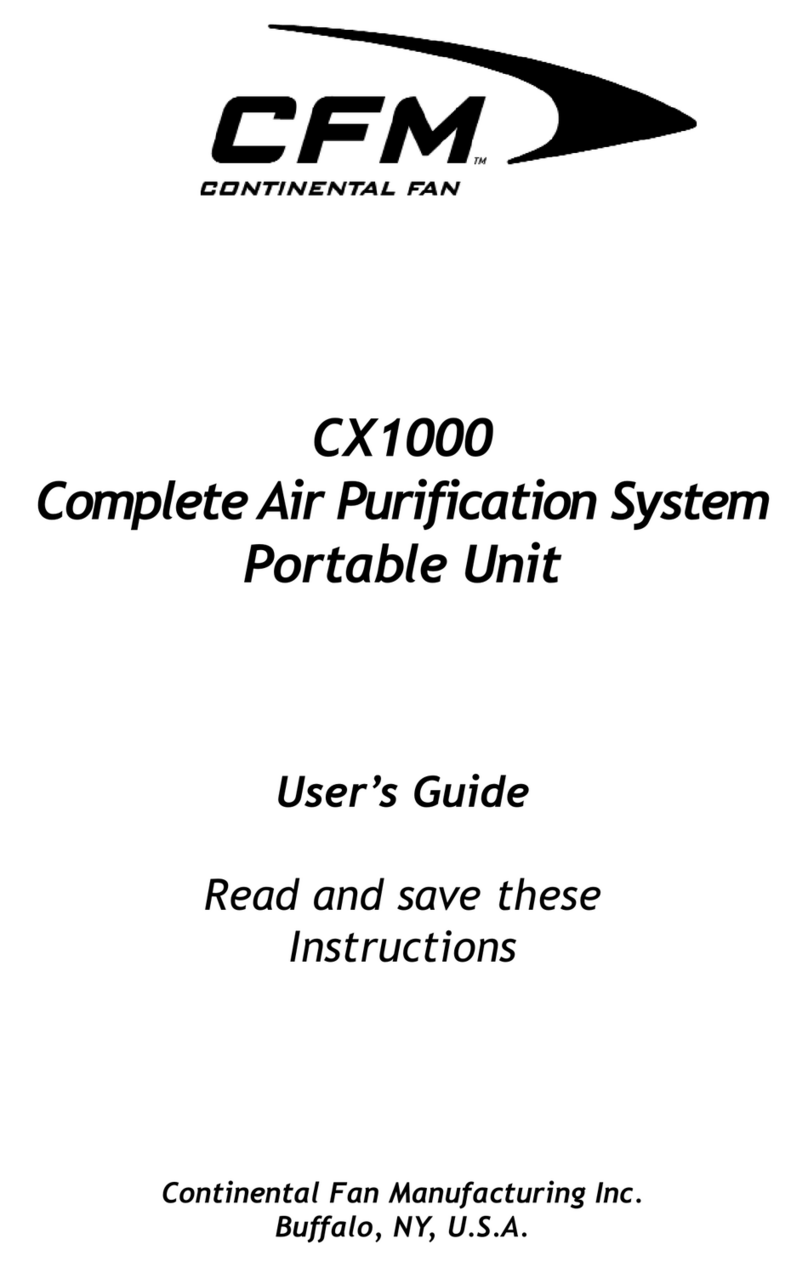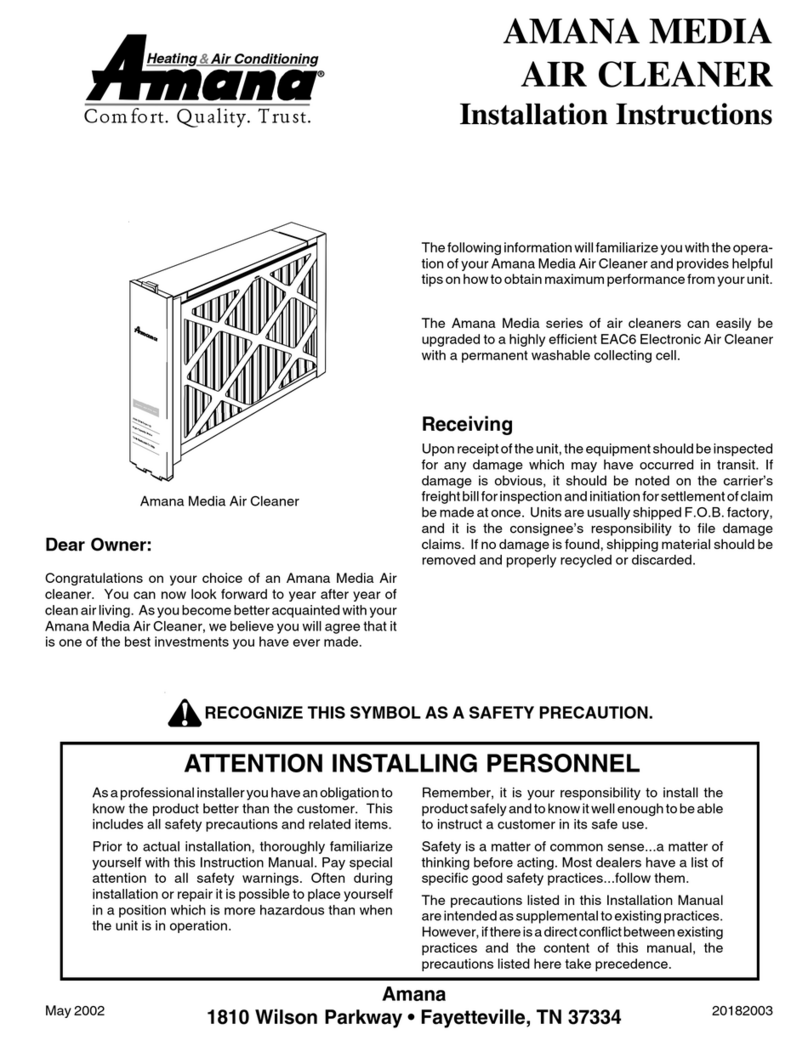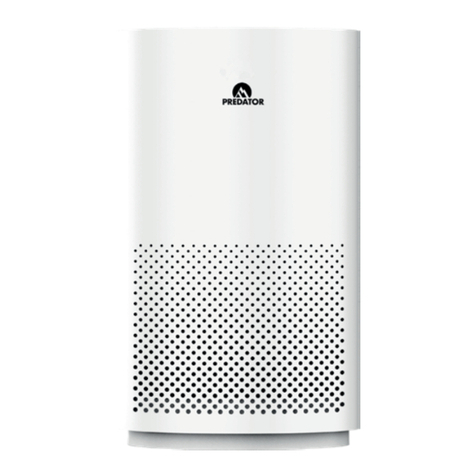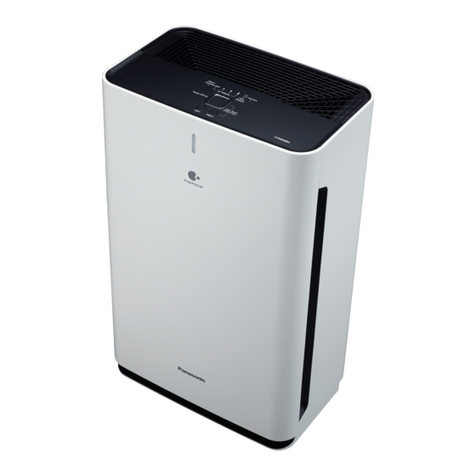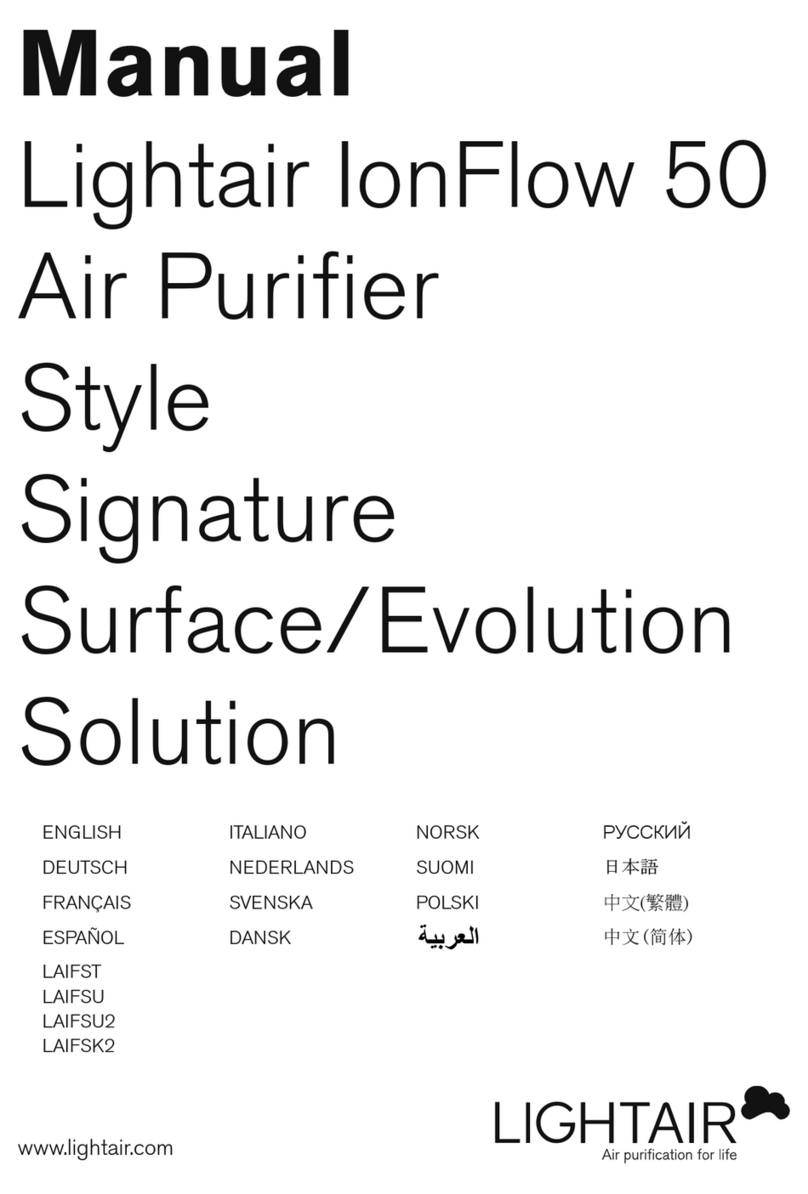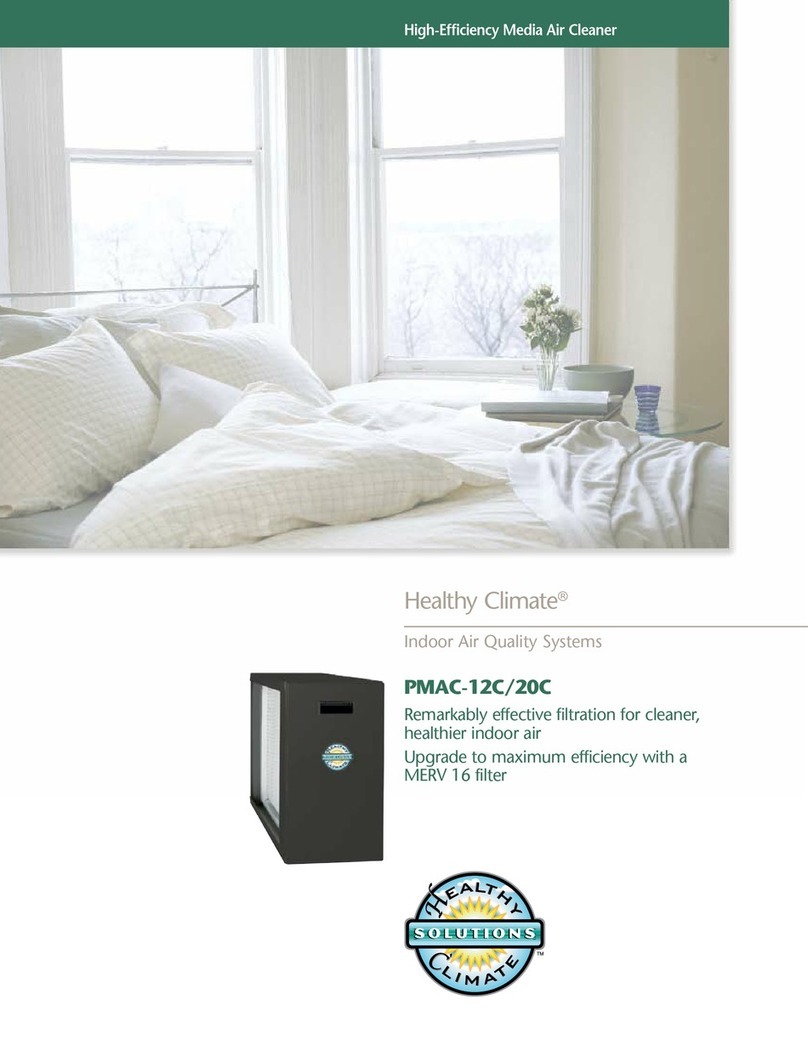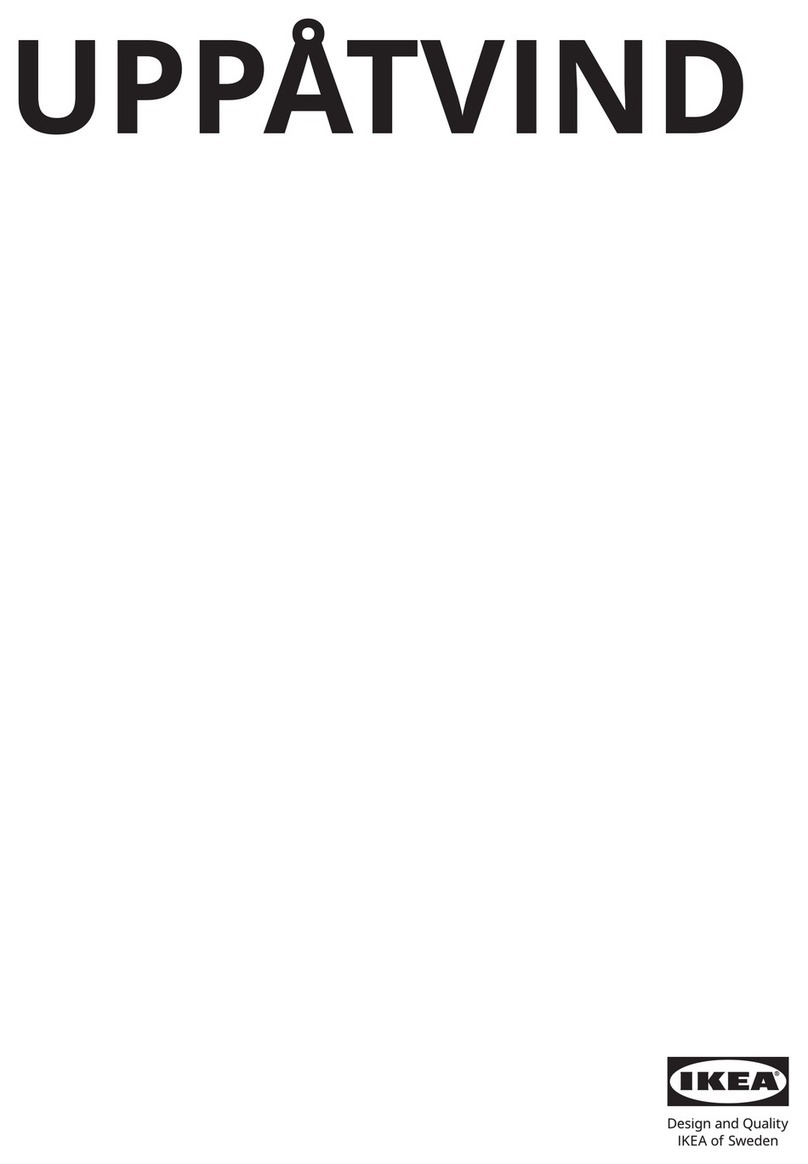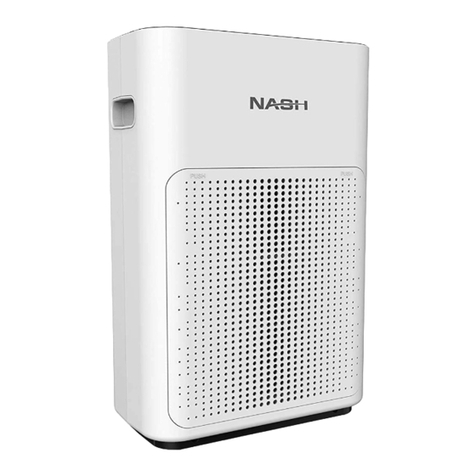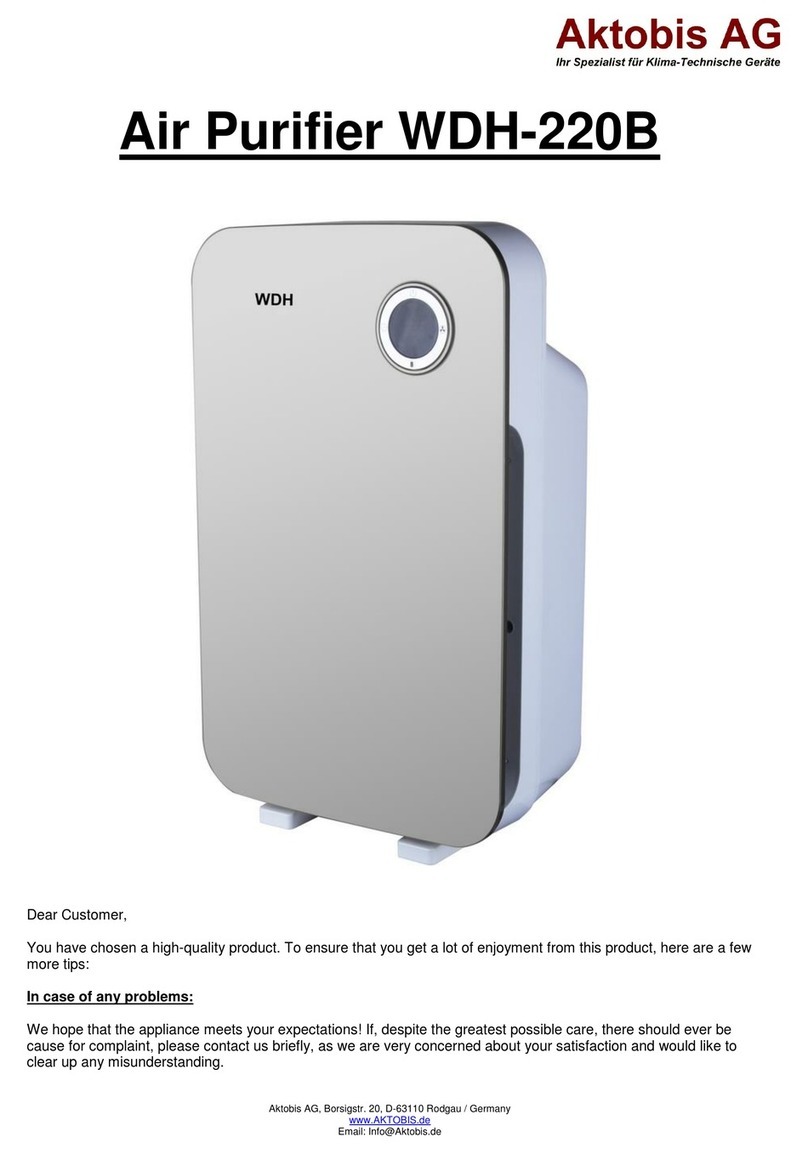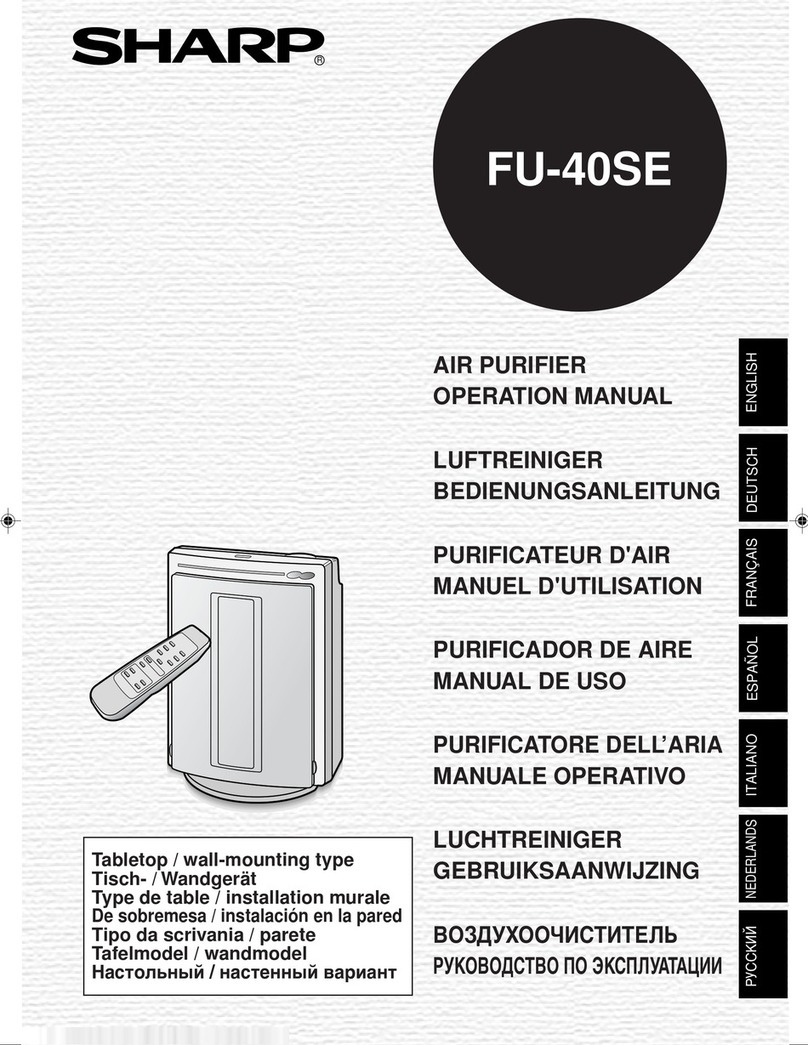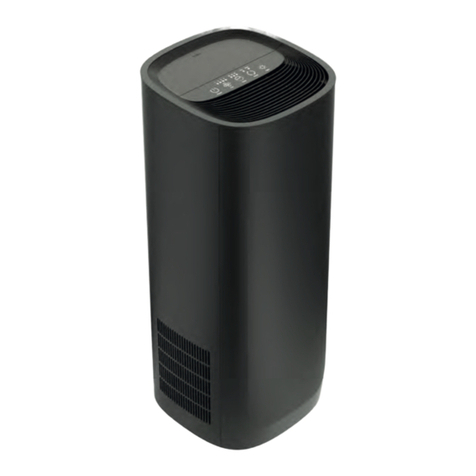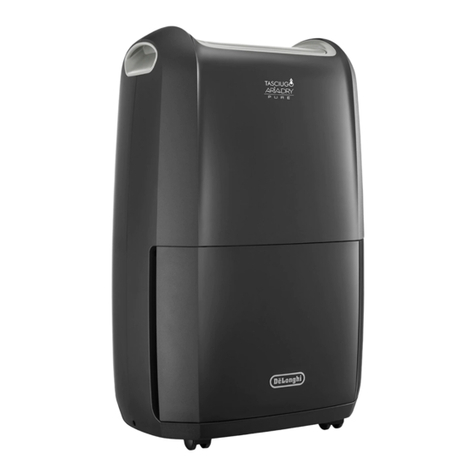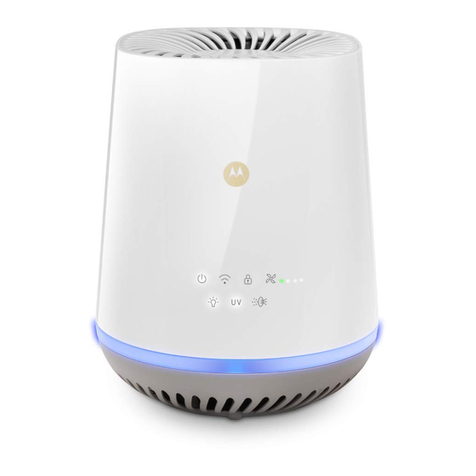Rieber ACS 1600 O3 Digital User manual

Issue: 2017-09-18
Design example
… with digital control
Article no. 91 14 04 07 acs 1600 03 digital W/K (warm / cold)
Article no. 91 14 04 08 acs 1600 03 digital W/W (warm / warm)
Article no. 91 14 04 09 acs 1600 03 digital N/N (neutral / neutral)
Article no. 91 14 04 10 acs 1600 03 digital N/W (neutral / warm)
Article no. 91 14 04 11 acs 1600 03 digital K/K (cold / cold)
Article no. 91 14 04 12 acs 1600 03 digital N/K (neutral / cold)
•Mobile unit with integrated extraction and circulating-air cleaning for food delivery
•air-cleaning-system acs®with patented plasma technology filters steam and vapour so that they are free from odour.
•acs®is a registered trademark of Eisfink Max Maier GmbH & Co. KG.
The illustrations show configuration examples, which do not necessarily have to be included in the scope of delivery.
Observe the operating instructions
Translation of the Original Operating Instructions
DOWNLOAD: USER MANUAL
QR code on type plate

Contents
2
Rieber GmbH & Co. KG
Rieber Professional. Our solutions guarantee high quality, safety and, above all,
excellent energy efficiency and cost effectiveness.
Contents
1Revision Index ................................................................................................................................................. 3
2Important Information ..................................................................................................................................... 4
2.1 Using this guide .................................................................................................................................................4
2.2 Representation conventions in the text ..............................................................................................................5
2.3 Structure of safety instructions...........................................................................................................................5
3Safety instructions .......................................................................................................................................... 6
3.1 General behaviour .............................................................................................................................................6
3.2 On use of electrical appliances ..........................................................................................................................6
3.3 Operator's obligations ........................................................................................................................................7
3.4 Personnelqualification requirements ..................................................................................................................8
3.5 Provide protective equipment for personnel .......................................................................................................9
3.6 Appliance-specific safety instructions.................................................................................................................9
3.7 Ensure preservation of the product identification..............................................................................................15
3.8 Note about applicable appliance-specific regulations.......................................................................................17
3.9 Instructions on behaviour in an emergency......................................................................................................18
4Purpose .......................................................................................................................................................... 19
5Description of device .................................................................................................................................... 20
5.1 Designation......................................................................................................................................................20
5.2 Extraction of vapour and steam........................................................................................................................21
5.3 Operating and display elements of the digital control .......................................................................................23
5.4 Technical data..................................................................................................................................................25
6Before First Use............................................................................................................................................. 27
6.1 Transport .........................................................................................................................................................27
6.2 Before using for the first time…........................................................................................................................28
7Use.................................................................................................................................................................. 29
7.1 Safety information with regard to use...............................................................................................................29
7.2 Electronic fan control........................................................................................................................................32
7.3 Chilling compartment (option) ..........................................................................................................................36
7.4 Warming compartment (optional).....................................................................................................................37
7.5 Use of cooking units (accessories)...................................................................................................................38
7.6 Clean the appliance daily after use ..................................................................................................................38

Contents
Rieber GmbH & Co. KG
3
8Cleaning, maintenance and care ................................................................................................................. 39
8.1 Safety information relating to cleaning, maintenance and care ........................................................................39
8.2 Cleaning agents for stainless steel...................................................................................................................41
8.3Choose the correct cleaning method................................................................................................................42
8.4 Overview of maintenance measures and intervals ...........................................................................................44
8.5 Clean cooking area and splash guard ..............................................................................................................45
8.6 Clean high-performance grease separator, grease drip trays … ......................................................................49
8.7 Inspect technical compartments and clean as required. Clean plasma generator ............................................54
8.8 Inspect/replace active carbon filter...................................................................................................................57
8.9 Clean chilling compartment (option).................................................................................................................59
8.10 Remove fluff from the ventilation slots on the chilling compartment (option) ....................................................59
8.11 Clean warming compartment (optional)............................................................................................................60
8.12 Clean neutral compartment (option) .................................................................................................................60
8.13 Clean castors ...................................................................................................................................................60
8.14 Keep ready for next use in dry condition ..........................................................................................................60
9Troubleshooting –What now?..................................................................................................................... 61
9.1 Notes on troubleshooting .................................................................................................................................61
9.2 Disposing of your product.................................................................................................................................62
10 Index............................................................................................................................................................... 63
11 Warranty and liability.................................................................................................................................... 64
12 Excerpt from EC Declarations of Conformity ............................................................................................. 64
13 Contact address ............................................................................................................................................ 64
1 Revision Index
Revision
Change
2017-09-18
First issue

Important Information
4
Rieber GmbH & Co. KG
2 Important Information
2.1 Using this guide
This guide contains important information about how you can use the appliance safely and correctly.
►Read the operating instructions before first using the product.
►Keep this guide in a safe place and pass it onto the next owner should you
wish to part with the product.
Our customers often express the wish to have one compact guide instead of a number of different
guides for these product variants, which have similar functions.
If there are any shortcomings in your opinion, please do not hesitate to let us know. With your help, we
will try to become even better.
Please add your notes here ☺

Important Information
Rieber GmbH & Co. KG
5
2.2 Representation conventions in the text
•Lists are represented in this way.
➢Instructions on certain actions are represented in this way.
See ‘. . . ’ cross-references are represented in this way
ATTENTION
indicates potential damage to property without any personal injury.
Failure to follow these instructions may cause damage to property.
User tip
►Useful information or tip
2.3 Structure of safety instructions
The signal words DANGER - WARNING - CAUTION classify the degree of risk of bodily injury in an actual
situation. You can avoid injury by complying with the behavioural rules provided.
The warning triangle symbol indicates a "General Danger".
DANGER
indicates imminent danger.
Failure to follow these warning instructions will result in serious bodily
injury or even death.
WARNING
indicates a potentially hazardous situation.
Failure to follow these warning instructions may cause serious bodily
injury or even death.
CAUTION
indicates a potentially harmful situation.
Failure to follow these warnings may cause minor bodily injury.

Safety instructions
6
Rieber GmbH & Co. KG
3 Safety instructions
This section covers residual risks and hazards associated with the intended use of the appliance. We have
provided a list of all generally valid safety instructions which must be followed.
In the following section, safety information relating to a particular operation or situation is placed before the
appropriate operation step or description of the situation.
3.1 General behaviour
This appliance meets the current state of the art and complies with all acknowledged technical safety-
related regulations. Nevertheless hazards may still arise.
➢Only use this appliance when it is in fault-free condition and according to the instructions in this
user guide.
➢During all phases of the appliance's life please ensure that the appliance is safely integrated into
its environment.
➢Do not make any conversions or modifications to the appliance.
➢Use the appliance as intended, for your safety.
Chapter ‘Purpose’,Page 19
3.2 On use of electrical appliances
Safety instructions according to EN 60745-1:
Work area
•Keep your work area clean and tidy. A messy or unlit work area can cause accidents.
•Keep children and other people away from the area when work is being carried out.
Electrical safety
•The plug on the unit must fit in the socket. Do not modify the plug in any way. Never use
an adapter in combination with earthed appliances. Using an unmodified plug and a
suitable socket will reduce the risk of an electric shock.
•Keep the device away from rain or wet. Allowing water to get into an electric appliance
will increase the risk of electric shock.
•Do not use the cable for anything other than the intended purpose to disconnect the plug
from the socket. Always remove whilst holding onto the plug. Keep the cable away from
heat, oil, sharp edges or the moving parts of other appliances. Using damaged or tangled
cables increases the risk of electric shock.
•Potential risk of fire due to heat build-up. Unwind the cable from the cable drum to
prevent a possible heat build-up and/or cable fire. The coupling must have splash
protection, must be made of rubber or be rubber-coated.

Safety instructions
Rieber GmbH & Co. KG
7
Safety guidelines for persons
•Be attentive and pay attention to what you are doing, act rationally when working with an
electrical appliance. Do not use the appliance when tired or under the influence of drugs,
alcohol or medication.
Just one moment of inattention whilst using the appliance can result in serious injury.
•Make sure the appliance cannot be switched on unintentionally. Double check that the
main switch is in the "OFF" position before inserting the plug in the socket. Connecting
the appliance to the power supply while it is switched on can cause an accident.
Careful handling and use of electrical appliances
•Never use an electrical appliance with a faulty switch. An electrical appliance which can
no longer be switched on or off is dangerous and must be repaired.
•Keep unused electrical devices away from children. Do not allow the appliance to be
used by persons who are not familiar with it or persons who are not familiar with this user
guide. Electrical appliances are dangerous when in the hands of inexperienced persons.
•Treat the device with care. Check that moving parts are functioning properly and do not
block; check whether parts are broken or damaged and impairing the functioning of the
device. Have any damaged parts repaired before using the appliance. Many accidents
are caused by poorly-maintained electrical appliances.
•Use electrical appliances, accessories etc in accordance with these instructions and in a
manner that is specified for this particular appliance type. When using the appliance,
please take into account the working conditions and the work being carried out. Using
electrical appliances for other uses than that intended can lead to hazardous situations.
Service
•Only have the device repaired by qualified and authorised staff. Only use original spare
parts. In this way you can ensure that the appliance remains safe.
3.3 Operator's obligations
Operator
The operator is the person who operates the appliance for commercial or economic purposes either
himself/herself or lets others use it and bears the legal appliance responsibility for protection of the
user, staff or any third parties during operation.
Operator's obligations
The appliance is used in commercial applications. For this reason, the operator of the appliance must
meet all legal duties relating to work safety.
In addition to the safety instructions in this guide, the safety, accident prevention and environmental
protection regulation applying to the application of the appliance must be complied with.
In particular, the following shall apply:
•The operator must be familiar with the applicable work safety regulations and identify, by
carrying out a risk analysis, any additional hazards which are due to the place where the
appliance is used. These hazards must be addressed in the form of operating instructions
governing the operation of the appliance.
•Throughout the period of use of the device the operator must check that the operating
instructions which he has compiled comply with the current regulations and adapt them if
necessary.

Safety instructions
8
Rieber GmbH & Co. KG
•The operator must clearly regulate and define the responsibilities for installation, operation,
troubleshooting, maintenance and cleaning.
•The operator must ensure that all employees who use the device have read and
understood these instructions. In addition, the operator must train the personnel and inform
them of the hazards involved at regular intervals.
•The operator must provide the personnel with the necessary protective equipment and
issue mandatory instructions on wearing it.
In addition, the operator must ensure that the appliance is always in a perfect technical condition. For
this reason, the following shall apply:
•The operator must ensure that the maintenance intervals defined in this guide are obeyed.
•The operator must regularly check all safety devices for functionality and completeness.
•The operator must ensure that the appropriate media connections are present.
•The operator must ensure that structural safety measures are performed.
3.4 Personnelqualification requirements
Safe operation requires certain technical skills and personal qualification of each person.
•The responsibility for organization lies with the ‘Designated Representative’ (operator).
According to EN 50110-1 a work supervisor is a person who is appointed to take direct
responsibility for the performance of work. If necessary, this responsibility can be assigned
partly to other persons. [...] The designated representative must instruct all persons
involved in the work on all hazards which may not be obvious for them’.
•The work may only be performed by ‘instructed persons’ who have been trained
accordingly. Training, instructions must be repeated, proper understanding must be verified
(ideally by way of an appropriate test).
•Unloading from the pallet (optional delivery condition) may only be carried out by suitable
and trained operating personnel.
•Only ‘Qualified Staff’ are allowed to carry out repair work.
IEC 60204-1 defines qualified personnel as "persons who, on account of their training and
relevant experience are in the position to recognise risks and avoid potentially dangerous
situations."
•Electrical work may only be carried out by trained and experienced electricians.
Electro-technically instructed persons may only work under the supervision of a qualified
electrician.
•Handling refrigerant is only permitted by an expert, such as a refrigeration expert; applies
to version with chilling compartment (option).
•Any repairs and/or overhaul during the warranty period may only be carried out by the
manufacturer´s service department of Rieber.
Chapter ‘Warranty and liability’, page 64

Safety instructions
Rieber GmbH & Co. KG
9
3.5 Provide protective equipment for personnel
➢Ensure that the personnel wear the personal protective equipment appropriate to the relevant
situation.
➢Wear safety shoes to prevent injuries during transport.
➢Wear protective gloves to prevent burns to hands and arms when using the warming compartment
(option) and cooking accessories.
3.6 Appliance-specific safety instructions
This chapter describes appliance-specific safety instructions. In the following section, additional safety
information relating to a particular operation or situation is placed before the appropriate operation step or
description of the situation.
3.6.1 Risks due to electricity
➢Before carrying out repairs, maintenance and cleaning activities disconnect the appliance from
the power supply by unplugging the mains plug. For example, if the high-performance grease
separator, grease drip tray etc. are removed during cleaning, liquid could come into contact
with electrical parts in the technical compartment practically unhindered.
➢Connect the appliance to a socket with a series-connected residual current operated device (RCD)
with a tripping current of 30 mA.
A qualified electrician can technically assess the need for potential equalisation.
➢Have potential equalisation carried out by a qualified electrician if necessary.
Page14, 29 et seqq.
➢Before each use, inspect the product, the connecting plug and electric cable for any visible signs
of damage.
➢The cable must be routed so that it cannot be squeezed or overheated.
➢The socket outlet must be easily accessible so that the unit can be disconnected from the power
supply at any time.

Safety instructions
10
Rieber GmbH & Co. KG
3.6.2 Risks due to the wrong handling of the unit´s extraction and circulating-air
cleaning
The unit's extraction and circulating-air cleaning is not a replacement for an air-conditioning system.
Always ensure an adequate supply of fresh air.
Contaminated ambient air, odour nuisance due to human error.
WARNING
Health risks, respiratory disorders due to human error.
►Only use with original filter components, which are correctly mounted.
►Do not interfere with the extraction and circulating-air cleaning. Do not place any
objects on the active carbon filter in the technical compartment, for example. Only
operate with a dry active carbon filter.
Risks due to human error
Risk of fire
Risk of fire due to missing or incorrectly mounted filter components.
Risk of fire due to failure to clean grease-laden active carbon filters, grease drip trays etc.
►Only use with original filter components, which are correctly mounted.
►Clean the appliance correctly.
►Never operate the appliance unsupervised.

Safety instructions
Rieber GmbH & Co. KG
11
3.6.3 Risks due to opened technical compartment
The technical compartment contains electrical parts.
Before opening the technical compartment
➢Switch the ‘ON/OFF pushbutton with indicator light’ to OFF.
▌The LED is off.
▌The fan wheel is stationary.
➢Remove the mains plug if necessary.
➢Use a suitable tool to open and close the technical compartment.
➢Keep the technical compartment closed.
3.6.4 Risks during transport
The weight of the empty appliance is around 237 kg; maximum permissible loading is 200 kg.
There are numerous hazards, such as crushing of parts of the body.
➢Remove accessories and transport them separately.
➢Disconnect the connection cable.
➢Keep the doors closed during transport.
➢Transport the appliance on a level surface. Do not transport on a sloped surface, as you could lose
control of the heavy appliance and hazardous situations could result.
➢Move the appliance with an adequate number of people, at least 2.
➢Transport only permissible using the castors.
➢Secure the appliance against inadvertently rolling away with the ‘parking brake’.
➢Wear safety shoes to prevent injuries.
ATTENTION
Uneven ground such as edges, ridges or thresholds can damage the castors.
►Only move the appliance over flat, smooth surfaces. Do not push or pull the
appliance over sharp edges.
►Do not use this appliance with poor floor conditions.
We are not able to rule out the possibility of marks appearing on the floor due to
friction with castors or the formation of scratches due to split cracks in the castors,
for example.

Safety instructions
12
Rieber GmbH & Co. KG
Unloading from the pallet (optional delivery condition)
➢WARNING
Unloading from the pallet may only be carried out by suitable and trained operating personnel.
Approx. 240 kg
ATTENTION
Do not unload the appliance from the pallet using the fork-lift truck, as this could cause
substantial damage.
►Unloading from the pallet (optional delivery condition) may only be carried out by
suitable and trained operating personnel.
Transport instructions on the outside of the appliance
3.6.5 Risks due to hot surfaces
➢Switch the ‘ON/OFF pushbutton with indicator light’ to OFF.
▌The LED is off.
110 °C
WARNING
There is a risk of burning one's hands and arms on hot surfaces of the warming
compartment (optional), which can reach temperatures of 110 °C.
►Wear personal protective equipment i.e. protective gloves.
►Keep unauthorised persons away from the appliance.
►Never operate the appliance unsupervised.

Safety instructions
Rieber GmbH & Co. KG
13
3.6.6 Risks due to cooking accessories
# As a general rule
All kinds of risks may occur if the wrong cooking accessories are selected.
➢Only use correctly sized accessories.
➢User tip. The cooking modules in the Rieber varithek ®range are recommended. Baking,
grilling, cooking, wok cooking and frying.
Chapter ‘Use of cooking units (accessories)’, page 38
3.6.7 Warnings concerning the use of the appliance by children
•This appliance may be used by children over 12 and by persons with limited physical,
sensory and intellectual abilities or a lack of experience and/or knowledge if they are
supervised or if they have been instructed in the safe use of the appliance and have
understood the resulting dangers.
•When using the appliance with ‘accessories’, other risks may arise.
•Children may not play with the appliance.
•Cleaning and user maintenance may not be carried out by children without supervision.

Safety instructions
14
Rieber GmbH & Co. KG
3.6.8 Safety and monitoring devices
# Sensors for condition monitoring
1 High-performance grease separator, 4 pcs.
3 Grease drip trays; 4 pcs.
7 Pressure sensor
8 Connection to equipotential bonding
When the system is started, the pressure conditions (7) are monitored within around 1 minute. In the
event of pressure loss or a deviation of around 20% from the nominal condition, the plasma generator
is stopped. The fans are not stopped.
# More
•The circuits are protected by 8 circuit-breakers. The respective circuit-breaker must be
switched on again.
(Circuit breakers are located on the left and right behind the switch panels)
•Interruptions in the power supply do not cause malfunctions.
•High-performance grease separator (1) (100% flame propagation proof) with Cyclone®blade
profile (separation efficiency approx. 95%).
•The pressure sensor (7) monitors the pressure conditions in the technical compartment. In
the event of a fault the plasma generator is switched off, for example if the technical
compartment is opened.
•In addition to protection against electric shock and in order to ensure that the frames of
electrical equipment and any external conductive components are at an equal (or practically
equal) potential, the appliance must be connected to the equipotential bonding system.
The connection of all conductive bodies (housing) of electrical equipment to an earthed
protective conductor and the main earthing bar is the basic principle for protection against
electric shock. A qualified electrician can technically assess the need for potential
equalisation. Have the equipotential bonding carried out by a qualified electrician.
See chapter ‘Safety information with regard to use’, page 29 et seqq.

Safety instructions
Rieber GmbH & Co. KG
15
3.7 Ensure preservation of the product identification
The product identification of your appliance on the type plate provides important technical data for use
and a unique identification, which is necessary for replacement and wearing parts, for example. Safety
instructions assist safe handling.
➢Regularly check that the appliance is correctly identified. Inspect this at least 1x annually.

Safety instructions
16
Rieber GmbH & Co. KG
General
Technical compartment,
extraction
Chilling compartment
(optional)
Warming compartment
(optional)
•The type plate bears the legally required product data.
•High-performance grease separators are marked with raised points. These markings can
also be found on the counterpart or frame.
Example
W/C
(warm /
cold)
# Product identification in the side extractors at front left / right
•The high-performance grease separators are marked with raised points. These markings
are also found on the housing in the cooking area.
•The filter mat is blue on the visible side.
Order no. 91 70 05 15
Product identification in technical compartment
Identification of the active carbon filter:

Safety instructions
Rieber GmbH & Co. KG
17
Identification on the inside of the door of the technical compartment:
WARNUNG
Gesundheitsgefahren, Atemwegsbeschwerden
►Aktivkohlefilter von Eisfink verwenden.
►Stellen Sie keine Gegenstände darauf ab.
►Jeglicher Eingriff in den Plasmagenerator ist unzulässig.
WARNING
Health risks, respiratory disorders
►Use Eisfink active carbon filter.
►Do not put any objects on the filter.
►All interference with the plasma generator is forbidden.
AVERTISSEMENT
Dangers pour la santé, problèmes respiratoires
►Utilisez un filtre à charbon actif d’Eisfink.
►Ne déposez jamais aucun objet sur le filtre.
►N’effectuez acune intervention non autorisée sur le générateur
de plasma.
Vor Öffnen des Gerätes den Netzstecker ziehen.
Unplug the mains plug before opening the appliance.
Avant d’ouvrir l’appareil retirez la fichemâle.
3.8 Note about applicable appliance-specific regulations
In addition to this user guide there are a range of health and safety and other regulationsthat are
relevant for the operation of this cooking station; these include HACCP food hygiene regulations for
example.
# Fulfillment of standards and guidelines
•VDI directive 2052 Air-conditioning systems. The unit's extraction system is not a
replacement for an air-conditioning system.

Safety instructions
18
Rieber GmbH & Co. KG
3.9 Instructions on behaviour in an emergency
➢In an emergency always interrupt the power connection immediately, by disconnecting the
electrical connector.
First aid in the event of burns to hands and arms, crushing of feet, electric shock
➢Inform yourself on this before commissioning the appliance.
➢Store the emergency equipment, including the relevant instructions, at a readily accessible place
near the place of use.
User tip
►Inform yourself in details by reading the in-house operating instructions.
►We recommend that half-yearly emergency training sessions should be carried out.
First aid in the case of inexplicable mucosal irritations or strong tickle in the throat.
WARNING
Breathing difficulties, lacrimal irritation, mucosal irritations in throat, neck and lungs,
headache, strong tickle in the throat, cannot be excluded in the case of human error.
The cause may be: original Eisfink filter was not used; filter incorrectly installed; circulating
air is disrupted, or an object is located on the active carbon filter in the technical
compartment.
►Remedy any defective condition.
►Seek medical treatment if necessary. Ozone-containing air can trigger complaints.
Chapter ‘Cleaning, maintenance and care’, page 39 et seqq.

Purpose
Rieber GmbH & Co. KG
19
4 Purpose
This chapter describes the intended use and contains warnings against misuse, for your safety.
Generally, the following are intended uses for the product:
•For mobile service in the catering, hotel, and food processing industry; also suitable for the
care and school catering sectors.
•For neutral, cold or hot transport, storage or dispensing of food.
•To prevent persons from burning themselves on hot surfaces, use of the product in
public/for self-service should only be allowed under constant supervision.
•Wear personal protective equipment such as safety shoes when moving the appliance.
Wear protective gloves which will prevent you from burning your arms or hands on the hot
parts, such as the heating element, hot parts, objects and meals.
•Connect a residual current operated device (RCD) with a tripping current of 30 mA in series
on site.
•The intended use includes compliance with the technical data.
•For use only by appropriately trained and suitable operating personnel.
Prevent any predictable misuse and abuse:
•Only use with original filter components, which are correctly mounted.
•Use correctly sized cooking units. We recommend the cooking modules in the Rieber
varithek ®range. Baking, grilling, cooking, wok cooking and frying. The relevant operating
instructions must be observed.
•The integrated air-cleaning-system acs®ensures that the extracted air is passed back into
the room odour-free. This is not a replacement for an air-conditioning system.
•Any inference in the ‘plasma generator’ is forbidden.
•Do not use gas cooking units, as this can be dangerous.
•Do not flambé, as this can be dangerous.
•Do not operate the appliance unsupervised. To prevent injuries such as burns on hot
surfaces, use of the product by the public should only be allowed under supervision.
•No error message is given in the event of a power failure. Operate the appliance under
supervision.
•The appliance is used stationary, without being moved.
•Not intended for private use at home.
•Do not lean against or sit on the appliance.
•Keep any combustible or explosive fluids away from heated appliances. Otherwise a fire or
explosion may occur.
•Incorrect cleaning can substantially and irreparably damage the stainless steel surfaces.

Description of device
20
Rieber GmbH & Co. KG
5 Description of device
This chapter provides useful information on the structure and function of the equipment.
5.1 Designation
Example
W/K
(warm /
cold)
1 2x compartments with 8 support ledges each →Options: hot - cold - neutral
2 Technical compartment →radial fan, plasma generator
3 Castor with parking brake’ →Secure the position with the four parking brakes.
4 Operator's controls and power connections for the cooking units →on both sides of the unit
5 Suction →3-sided suction of fumes and vapours
6 Sneeze guard attachment →including shelf for serving food, with light, with fixed splash guard
on the back of the appliance, with splash guard on both sides /removable
7 Connection for equipotential bonding
# Electrical operating and display elements
Page23 et seqq.
Table of contents
Other Rieber Air Cleaner manuals
